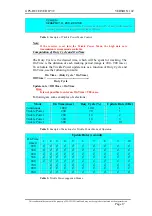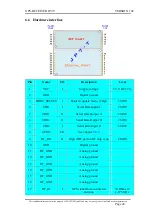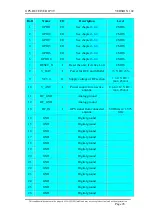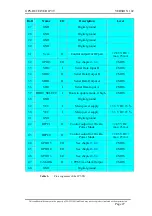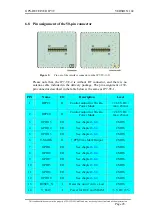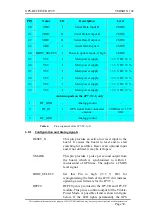
GPS-RECEIVER JP7-T
VERSION 1.02
5 Description of operating modes
There are three basic operating in which the JP7-T family operates during
use. Each mode is used to accomplish a different task during the process of
acquiring and maintaining the GPS information. The Falcom JP7-T family
designs include all the functionality necessary to implement the three
different modes of operation. The default mode of JP7-T family is normal
mode (continuous mode). Three different operating modes are described
below. Additionally, two of them are designed as low-power mode
consumption such as the Trickle Power mode and Push-To-Fix mode.
5.1 Normal Operation
In this default implementation of normal mode the JP7-T family is fully
powered and performs the function of signal search, acquisition,
measurement and satellite tracking. The amount of time spent in the initial
full power is dependent on the start condition that applies the number of
satellites for which the ephemeris must be collected and the time to calibrate
the RTC as well as the location of the GPS antenna (which it must have an
unobstructed view to the sky in order to receive the satellite radio
transmissions). When the JP7-T family has been locked-on to at least four
satellites, the receiver is able to calculate its current positions. In this mode
the JP7-T family is fully powered and satellite searching, initial acquisition,
initial position calculation and tracking measurements functions are always
performed. In order to reduce the start up time of the receiver it is preferable
to be connected to an external back up battery, so that the RTC is running
during the power interrupt. The backup power is required for retention of
SRAM memory and maintaining the Real-Time-Clock. The validity of data
stored in SRAM is kept due to RTC keeps running and these data will be
needed on the next power up scenario.
5.2 Trickle Power Operation
In the Trickle Power mode, power is still applied to the JP7-T family, but
the GPS engine is shut off and RF circuits are powered down. The Trickle
Power mode provides a method of operating the JP7-T family in a user
programmable duty cycle, consisting of a receiver measurement on time
tracking and an interval of position update, thereby reducing the average
power consumption over a period of time. The transition into the Trickle
Power mode of JP7-T family can be implemented and configured by using
the
Set Operating Mode
command in SiRFdemo. Between two on time
tracking periods the JP7-T family sets itself in the sleep phase in other word
into the low power consumption. The transition from sleep mode of JP7-T
family back to the on time tracking is generated through the internal RTC
which transmits a wakeup signal to the GPS engine to switch it on as well
the RF circuit is powered on. The JP7-T is waked up and begins to acquire
the on view satellites. In order to reduce the start up time of the receiver for
the next power up is preferable to connect an external back up battery, so
that the RTC is running during the power interrupt and the required data and
the Trickle Mode configuration are kept from previous operation. If the
This confidential document is the property of FALCOM GmbH and may not be copied or circulated without permission.
Page 15

















